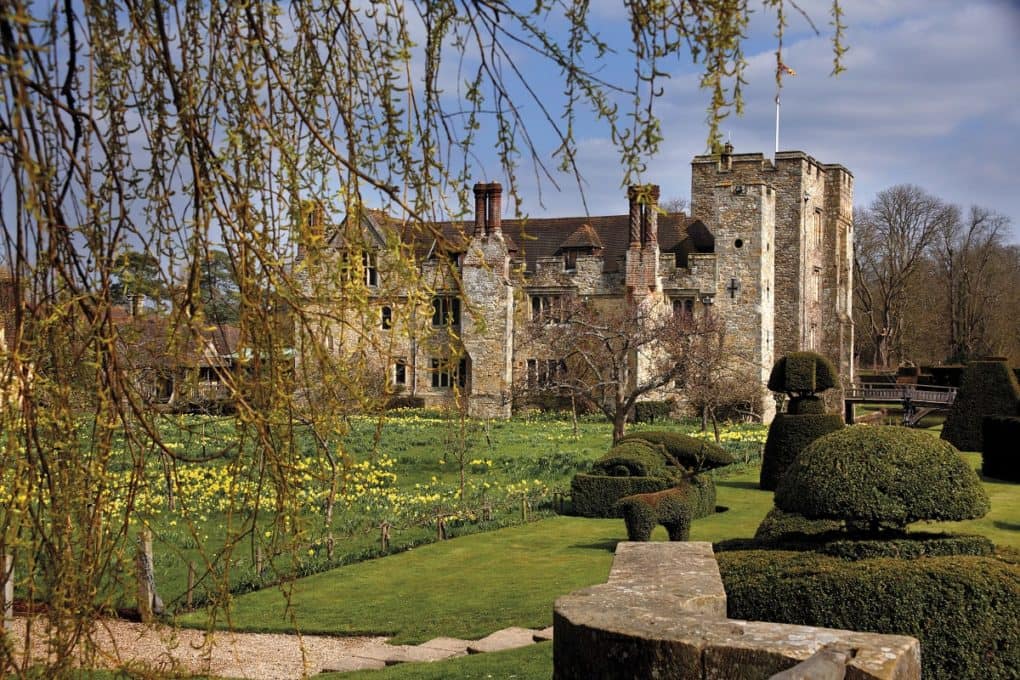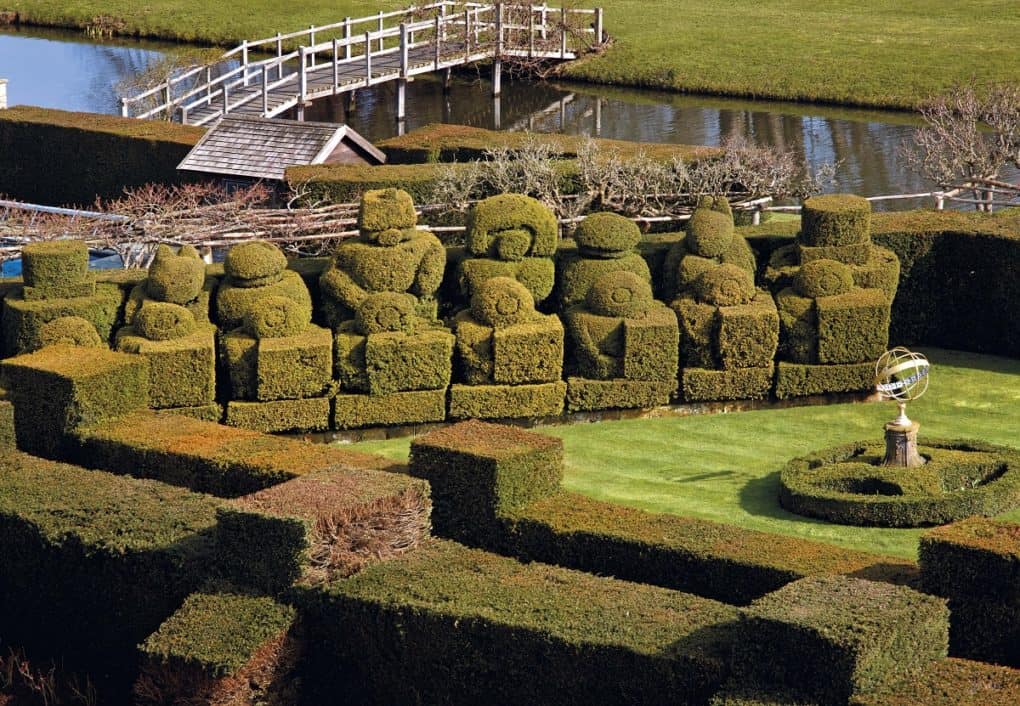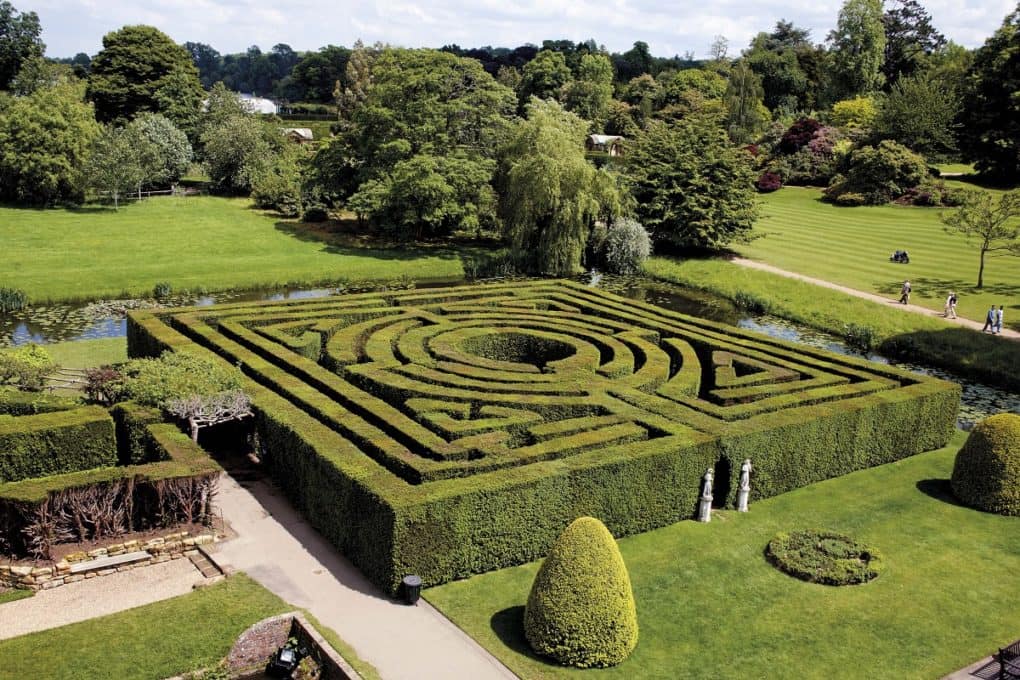

The theme for this week’s #TudorTuesdays with Historic Houses is orchards, topiary and mazes.
As part of the 125 acre stunning grounds, Anne Boleyn’s Orchard can be seen as you approach the Castle. The Orchard is often overlooked as it is partially concealed by Topiary Walk and sits in the shadow of the Castle.
In Anne Boleyn’s Orchard, a wide variety of apples and pears grow; many of which are old English varieties. Some of the varieties include: the Crab Apple Golden Hornet, the Flower of Kent which is supposedly the type of apple which sparked Newton’s theory of gravity, and the cooking variety, the Encore Apple.
Whilst many of the fruits are left for decoration, some are put to good use in the Castle’s kitchen by Head Chef, Les.
There are fruit trees dotted all over the gardens. Look out for the apple tree in the Winter Garden, and the abundance of Citrus trees along the Pompeiian Wall in the Italian Garden.
The accommodation in the Anne Boleyn Wing of Hever Castle’s 5* luxury bed and breakfast offers a unique perspective overlooking the Orchard and Castle. The ground floor breakfast room gives a truly stunning view through the lead windows, and the front facing bedrooms overlooking the Orchard.

Topiary is the art of clipping hedges into ornamental shapes, a technique which dates back to Roman times. Both topiary and mazes are part of the Renaissance garden tradition which became popular throughout Europe in the late 15th century.
The yew chess pieces took three years to shape up in Joseph Cheal’s nursery before they were ready to plant out in the Chess Garden as part of former owner William Waldorf Astor’s renovations.
The approach to the Hever Castle forecourt, known as Topiary Walk, contains both yew bushes and box hedges clipped into a variety of abstract designs and animal shapes, with new shapes introduced over the years.
It takes the garden team four to six weeks to trim the topiary and hedges using hand shears and mechanical hedge trimmers. The work involves a cosmetic trim in April and May, then a hard cut back in August and September.

Hever Castle has not one, but two Mazes in its 125 acre grounds.
The Yew Maze was created by Astor in 1906 who along with a number of other wealthy people followed the fashion of creating mazes for their own enjoyment.
Comprising more than 1,000 individual yew trees imported from Holland, it measures 80ft by 80ft (24.4m) and is 6,4000 square feet. The hedges reach 8ft (2.4m) in height and there is almost a quarter of a mile (0.4km) of pathways inside.
It is one of only a few traditionally designed mazes in the country but is currently closed.
The more modern but equally unusual Water Maze is a popular challenge for all ages.
Built in 1997 on Sixteen Acre Island by the current owners, the Guthrie family it is a maze with a difference – try and reach the stone grotto in the centre without getting wet!
The Water Maze consists of a series of concentric stepping stone walkways sitting over water; at intervals the stones tilt when stood on and hidden water jets spring into action to soak the unwary visitor.
If you enjoyed this item on orchards, topiary and mazes why not discover the previous #TudorTuesdays news items:
• Restoration
• Great Halls
• Books and Libraries
• Film and TV sets
• Elizabeth I
• Tudor Chapels
• Tudor Windows
• Tudor Tapestries
• Tudor Chimneys
• Tudor Panelling
• Tudor Knot Gardens
• Tudor Childhood
• Tudor Dining Rooms
• Tudor Rose Gardens
• Henry VII
• Henry VIII
• Mary I
Book your visit to Hever Castle & Gardens.
Within the grounds of the Hever Castle Estate, there are two opportunities for you to stay the night with us.
Hever Castle has played host to many important events and celebrations for over 600 years. In 1903 when William Waldorf Astor set about restoring Hever Castle to its former glory, he added the Astor Wing, to accommodate his family and guests, before creating a lake and the spectacular Italian Garden to house his impressive collection of ancient Greek and Roman statuary.
There are multiple places to eat & drink across the Hever Castle Estate. Select between the Castle & Gardens and Golf Club below to discover more.
Set in the mature grounds of the Hever Castle Estate, Hever Castle Golf Club is a 27 hole Kent golf course that will encourage and inspire all golf enthusiasts.
Set in the mature grounds of the Hever Castle Estate, the Wellbeing Centre consists of five smart treatment rooms.